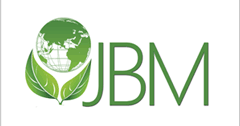Abstract
The water quality and macroinvertebrates from the downstream section of Eniong Creek were studied for six months, between August 2022 and January 2023 in three sampling stations/ points; to evaluate the ecological integrity and its suitability for habitation of aquatic organisms. Water samples were collected using sterilized plastic bottles and 250 mL reagent bottles for biochemical oxygen demand, and analyzed in accordance with the standard examination methods. Water temperature, dissolved oxygen (DO), transparency (TP), total dissolved solids (TDS), electrical conductivity (EC), and pH were measured in situ while water samples were collected for determination of phosphate (PO4-), nitrate (NO3-), sulphate (SO4-), total suspended solids (TSS), and biochemical oxygen demand (BOD5) in the laboratory. Macroinvertebrates samples were collected using the modified kick sampling technique, and identified using standard keys. The results showed that mean values for pH, DO, BOD5 in stations I, II, and PO4-, TSS in all the stations were deviated from the permissible limits. Three phyla, comprising of six classes of macroinvertebrates were recorded. Phylum Mollusca constituted the highest percentage composition (221 individuals, 87.0 %), while Annelida was the lowest (16 individuals, 6.3 %). Maximum species (115, 45.3 %) was obtained in point III while minimum (62, 24.4 %) was in point II. The study reveals that the economic activities couples with climate changes and seasonal factor influenced the concentrations of certain water parameters and macroinvertebrates assemblages. Thus, the creek should be protected by regulating the level of economic activities within the watershed, in order to improve water quality, maintaining the ecological integrity, and socio-economic services they provide.
Article History
Received: Jul 27, 2024; Accepted: Aug 15, 2024; Published: Sep 30, 2024
Recommended Citation
Jonah, U. E.,
Esenowo, I. K.,
& Enin, U. I.
(2024).
Water Quality and Macroinvertebrates Assessment of Eniong Creek, Akwa Ibom State, Niger Delta, Nigeria,
Journal of Bioresource Management, 11
(3).





